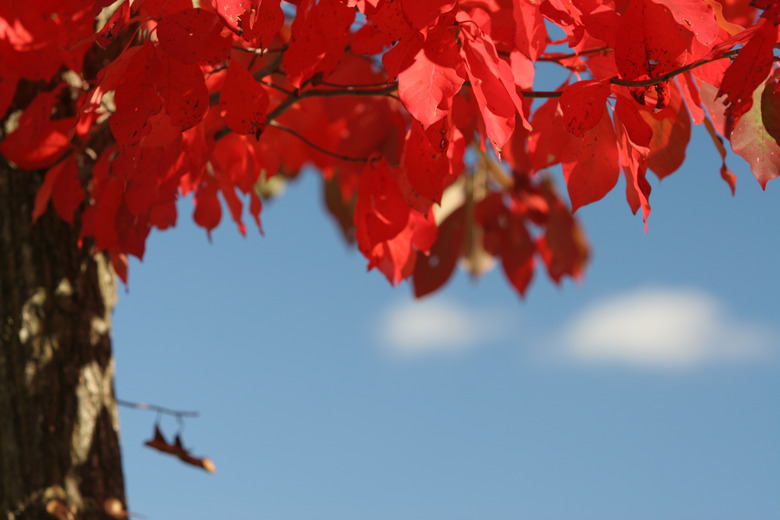Black Gum Tree Facts
There are many reasons to admire the towering, flowering and hardy black gum tree (Nyssa sylvatica, USDA zones 3-9). A ramrod-straight trunk and a rounded, far-reaching canopy make the black gum tree ideal for landscaping. Its bright, showy fall foliage is a pleasure to behold in the fall, and its clusters of bright green flowers in the spring make it a treasure for any large garden.
The black gum tree, also referred to as the black tupelo or sour gum, is slow growing and has a pleasing rounded form when it is lush with foliage in the spring as well as when its branches are bare in the winter.
Types of Black Gum Tree
Types of Black Gum Tree
If you are serious about planting a black gum tree, be aware that there are a few tree species that are similar, but which may not present the bright foliage and slender branches on a thick, straight trunk as the black gum does. In fact, the black gum tree isn't actually related to gum trees, which are in the eucalyptus family. The black gum tree is also called:
- Black tupelo
- Sour gum
- Cotton gum
- Pepperidge
- Swamp black gum
- Yellow gum
About the Black Gum Tree
About the Black
Gum Tree
Originally from the United States, the black gum tree's scientific name is Nyssa sylvatica. "Nyssa" is derived from the water nymph in Greek mythology. The Nyssa genus is native to North America. The following are some black gum or sour gum tree facts:
- This is the longest-lived species of hardwood found
to thrive in the eastern United States that grows at very low densities. - The deciduous
tree has its best showing in early fall with brilliant foliage. - Over time, the
black gum tree will drop branches and thin out from the top as it grows older. - It grows best
in hardiness zones 3 through 9 in the United States.
Best Black Gum Tree Conditions
Best Black Gum
Tree Conditions
The black gum tree starts out in a pleasing pyramid shape. As it grows, it continues to fluff out its canopy in a circular symmetry. The tree begins to decay from the top down as it ages. This will make the canopy square off in trees that are hundreds of years old or if the soil gets too much alkaline.
The black gum tree can grow to a towering 100 feet in height with a canopy stretching out to 35 feet. However, most black gum trees settle in at around 30 feet with a span of 20 feet of leafy branches. It needs full sun to grow to its fullest height, although it can flourish in part shade as well.
It has a long taproot that makes it delicate when picked up and transported to another spot. They do well put in the ground, as seeds grow where they are planted.
Black Gum Leaf
Black Gum Leaf
Black gum leaf on any variety of the tree is an elongated oval that flutters in the slightest of breezes from the slender branches. For landscape design, it is a fantastic fall choice.
Its fall foliage is a showstopper, with leaves turning various shades of orange, yellow, red and a striking purple. The light green flowers form in fine drooping clusters each spring.
Black Gum Tree as Firewood
Black Gum Tree as Firewood
Black gum tree has a twisted and interlocking grain, which makes it difficult to split. It is a hardwood that will burn once you have done a lot of work to split it up and dry it out. To thoroughly dry the wood and season it properly, it can take at least six months to two years.
Because the black gum tree begins to decay from the top down as it ages, this eventually makes the towering giant hollow. Its rotted-out trunks are most often used for bee hives rather than firewood.
